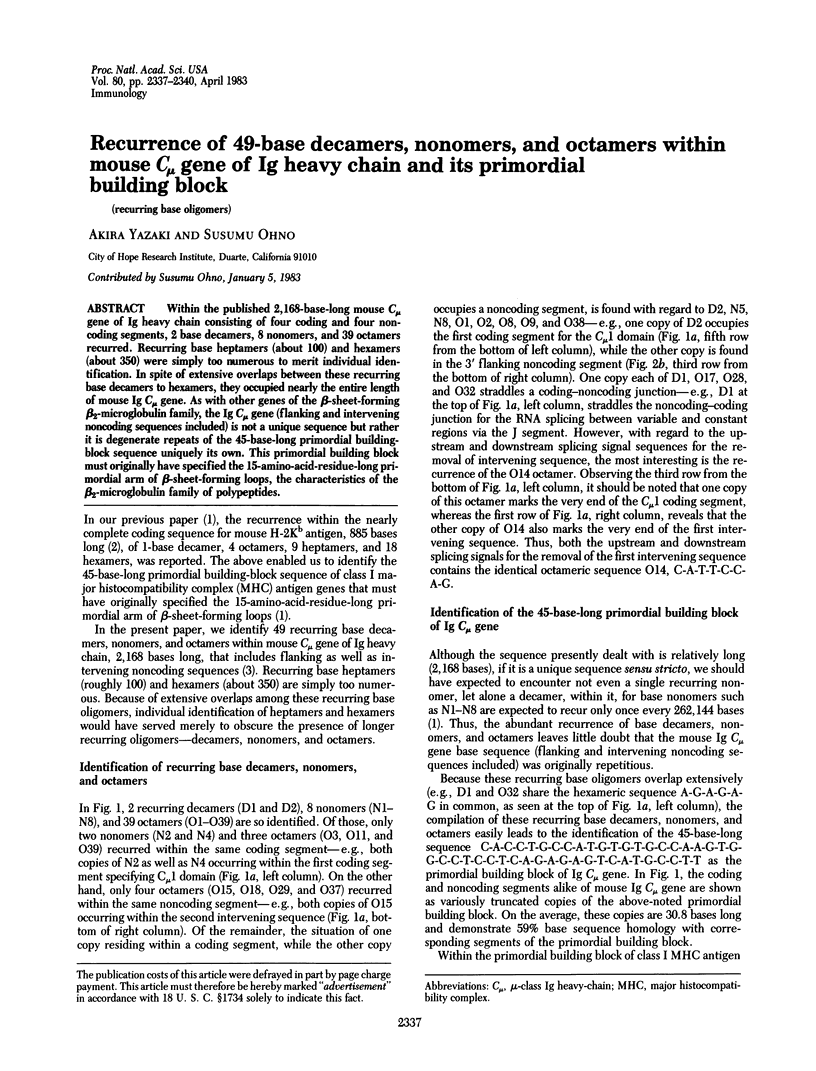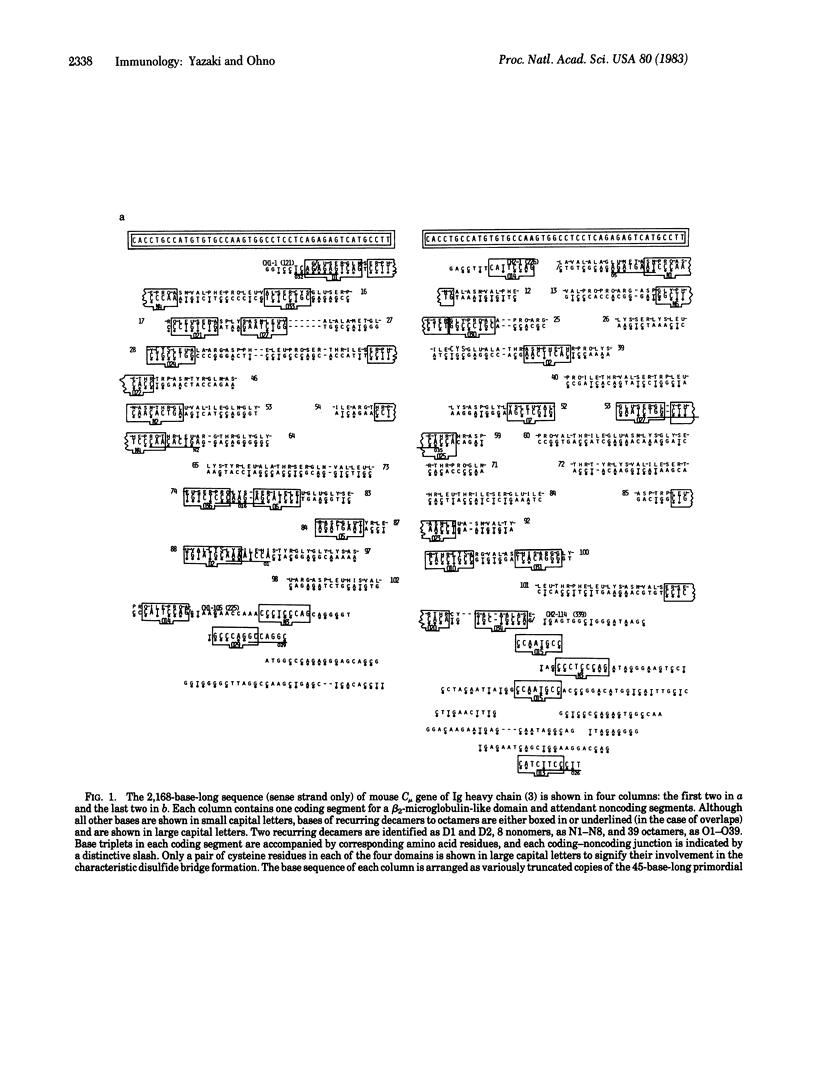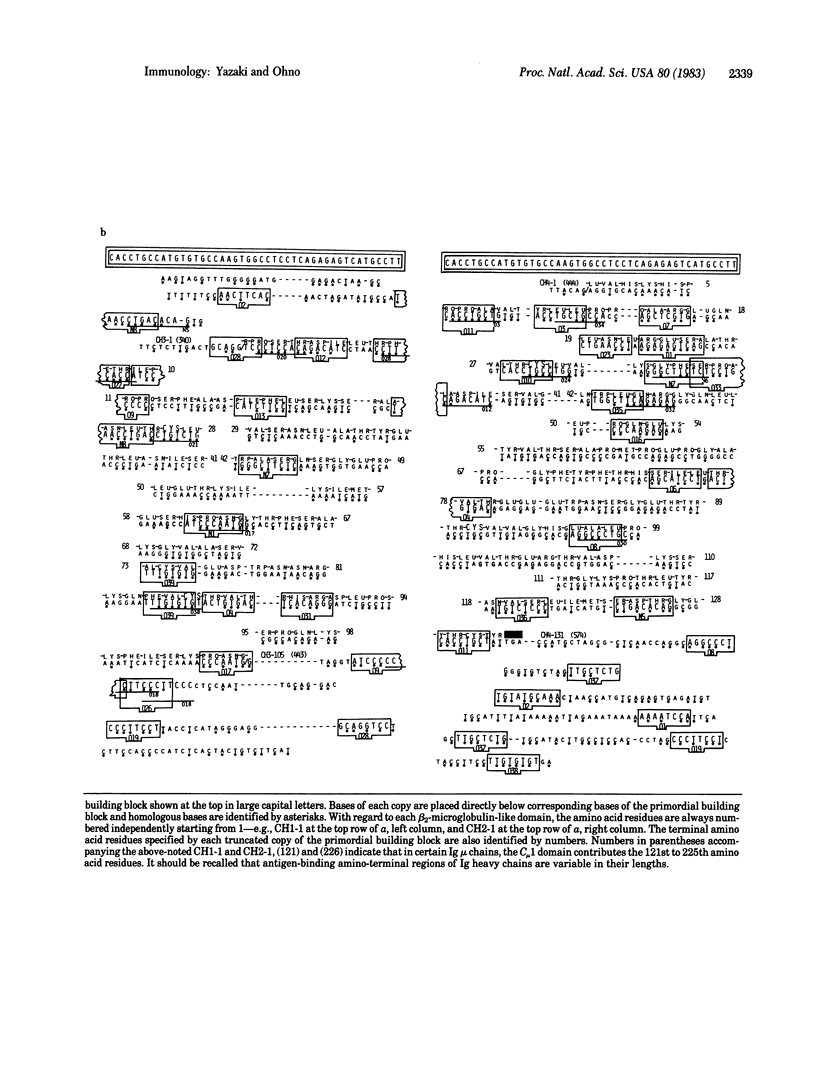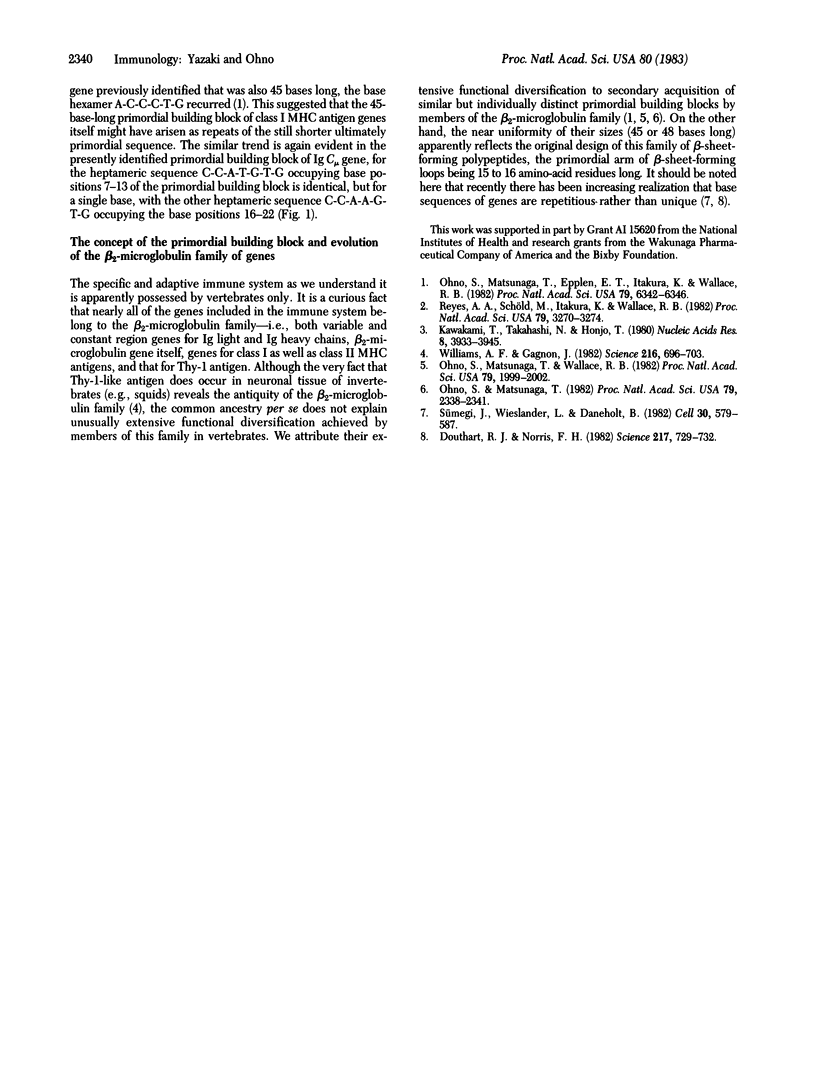Abstract
Within the published 2,168-base-long mouse C mu gene of Ig heavy chain consisting of four coding and four noncoding segments, 2 base decamers, 8 nonomers, and 39 octamers recurred. Recurring base heptamers (about 100) and hexamers (about 350) were simply too numerous to merit individual identification. In spite of extensive overlaps between these recurring base decamers to hexamers, they occupied nearly the entire length of mouse Ig C mu gene. As with other genes of the beta-sheet-forming beta 2-microglobulin family, the Ig C mu gene (flanking and intervening noncoding sequences included) is not a unique sequence but rather it is degenerate repeats of the 45-base-long primordial building-block sequence uniquely its own. This primordial building block must originally have specified the 15-amino-acid-residue-long primordial arm of beta-sheet-forming loops, the characteristics of the beta 2-microglobulin family of polypeptides.
Full text
PDF



Selected References
These references are in PubMed. This may not be the complete list of references from this article.
- Douthart R. J., Norris F. H. Events in the evolution of pre-proinsulin. Science. 1982 Aug 20;217(4561):729–732. doi: 10.1126/science.7100918. [DOI] [PubMed] [Google Scholar]
- Kawakami T., Takahashi N., Honjo T. Complete nucleotide sequence of mouse immunoglobulin mu gene and comparison with other immunoglobulin heavy chain genes. Nucleic Acids Res. 1980 Sep 11;8(17):3933–3945. doi: 10.1093/nar/8.17.3933. [DOI] [PMC free article] [PubMed] [Google Scholar]
- Ohno S., Matsunaga T., Epplen J. T., Itakura K., Wallace R. B. Identification of the 45-base-long primordial building block of the entire class I major histocompatibility complex antigen gene. Proc Natl Acad Sci U S A. 1982 Oct;79(20):6342–6346. doi: 10.1073/pnas.79.20.6342. [DOI] [PMC free article] [PubMed] [Google Scholar]
- Ohno S., Matsunaga T. The 48-base-long primordial building block of immunoglobulin light-chain variable regions is complementary to the primordial building block of heavy-chain variable regions. Proc Natl Acad Sci U S A. 1982 Apr;79(7):2338–2341. doi: 10.1073/pnas.79.7.2338. [DOI] [PMC free article] [PubMed] [Google Scholar]
- Ohno S., Matsunaga T., Wallace R. B. Identification of the 48-base-long primordial building block sequence of mouse immunoglobulin variable region genes. Proc Natl Acad Sci U S A. 1982 Mar;79(6):1999–2002. doi: 10.1073/pnas.79.6.1999. [DOI] [PMC free article] [PubMed] [Google Scholar]
- Reyes A. A., Schöld M., Itakura K., Wallace R. B. Isolation of a cDNA clone for the murine transplantation antigen H-2Kb. Proc Natl Acad Sci U S A. 1982 May;79(10):3270–3274. doi: 10.1073/pnas.79.10.3270. [DOI] [PMC free article] [PubMed] [Google Scholar]
- Sümegi J., Wieslander L., Daneholt B. A hierarchic arrangement of the repetitive sequences in the Balbiani ring 2 gene of Chironomus tentans. Cell. 1982 Sep;30(2):579–587. doi: 10.1016/0092-8674(82)90254-9. [DOI] [PubMed] [Google Scholar]
- Williams A. F., Gagnon J. Neuronal cell Thy-1 glycoprotein: homology with immunoglobulin. Science. 1982 May 14;216(4547):696–703. doi: 10.1126/science.6177036. [DOI] [PubMed] [Google Scholar]


